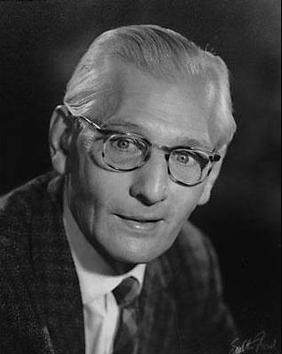
The Jutes were one of the Germanic tribes who settled in Great Britain after the departure of the Romans. According to Bede, they were one of the three most powerful Germanic nations, along with the Angles and the Saxons:
Those who came over were of the three most powerful nations of Germany—Saxons, Angles, and Jutes. From the Jutes are descended the people of Kent, and of the Isle of Wight, and those also in the province of the West Saxons who are to this day called Jutes, seated opposite to the Isle of Wight.

Mercia was one of the three main Anglic kingdoms founded after Sub-Roman Britain was settled by Anglo-Saxons in an era called the Heptarchy. It was centred on the River Trent and its tributaries, in a region now known as the Midlands of England.

The Kingdom of the South Saxons, today referred to as the Kingdom of Sussex, was one of the seven traditional kingdoms of the Heptarchy of Anglo-Saxon England. On the south coast of the island of Great Britain, it was originally a sixth-century Saxon colony and later an independent kingdom. The kingdom remains one of the least known of the Anglo-Saxon polities, with no surviving king-list, several local rulers and less centralisation than other Anglo-Saxon kingdoms. The South Saxons were ruled by the kings of Sussex until the country was annexed by Wessex, probably in 827, in the aftermath of the Battle of Ellendun. In 860 Sussex was ruled by the kings of Wessex, and by 927 all remaining Anglo-Saxon kingdoms were ruled by them as part of the new kingdom of England.

Charles Francis Christopher Hawkes, FBA, FSA was an English archaeologist specialising in European prehistory. He was Professor of European Archaeology at the University of Oxford from 1946 to 1972.

West Lockinge is a village in and former civil parish, now in the parish of Lockinge, in the Vale of White Horse district, in the county of Oxfordshire, England. It was part of Berkshire until the 1974 local authority boundary changes transferred the Vale of White Horse to Oxfordshire. The village is about 1.5 miles (2.4 km) east of Wantage and is included within the North Wessex Downs Area of Outstanding Natural Beauty (AONB). In 1931 the parish had a population of 60.

Helen Mary Geake is a British archaeologist and small finds specialist. She was one of the key members of Channel 4's long-running archaeology series Time Team.

Rupert Leo Scott Bruce-Mitford was a British archaeologist and scholar. He spent the majority of his career at the British Museum, primarily as the Keeper of the Department of British and Medieval Antiquities, and was particularly known for his work on the Sutton Hoo ship-burial. Considered the "spiritus rector" of such research, he oversaw the production of the monumental three-volume work The Sutton Hoo Ship-Burial, termed by the president of the Society of Antiquaries as "one of the great books of the century".

The Staffordshire Hoard is the largest hoard of Anglo-Saxon gold and silver metalwork yet found. It consists of almost 4,600 items and metal fragments, amounting to a total of 5.1 kg (11 lb) of gold, 1.4 kg (3 lb) of silver and some 3,500 pieces of garnet cloisonné jewellery. It is described by the historian Cat Jarman as "possibly the finest collection of early medieval artefacts ever discovered".
The archaeology of Anglo-Saxon England is the study of the archaeology of England from the 5th century AD to the 11th century, when it was ruled by Germanic tribes known collectively as the Anglo-Saxons.
Helena Francisca Hamerow, is an American archaeologist, best known for her work on the archeology of early medieval communities in Northwestern Europe. She is Professor of Early Medieval archaeology and former Head of the School of Archaeology, University of Oxford.
George Speake, is an English art historian and archaeologist. He is an Honorary Research Fellow at the Institute of Archaeology at Oxford, and "a leading authority on Anglo-Saxon animal art." Currently Speake is the Anglo-Saxon Art and Iconography Specialist for the Staffordshire Hoard conservation team, and is working on the reconstruction of the Staffordshire helmet.

The Staffordshire helmet is an Anglo-Saxon helmet discovered in 2009 as part of the Staffordshire Hoard. It is part of the largest discovery of contemporary gold and silver metalwork in Britain, which contained more than 4,000 precious fragments, approximately a third of which came from a single high-status helmet. Following those found at Benty Grange (1848), Sutton Hoo (1939), Coppergate (1982), Wollaston (1997), and Shorwell (2004), it is only the sixth known Anglo-Saxon helmet.
Julian Daryl Richards is a British archaeologist and academic. He works at the University of York where he is Professor of Archaeology, director of its Centre for Digital Heritage, and director of the Archaeology Data Service (ADS). He is also co-director of the academic journal Internet Archaeology, and contributed to the founding of The White Rose College of the Arts & Humanities. His work focuses on the archaeological applications of information technology. He has participated in excavations at Cottam, Cowlam, Burdale, Wharram Percy, and Heath Wood barrow cemetery.
Leslie Elizabeth Webster, is an English retired museum curator and art historian of Anglo-Saxon and Viking art. She worked from 1964 until 2007 at the British Museum, rising to Keeper, where she curated several major exhibitions, and published many works, on the Anglo-Saxons and Early Middle Ages.

Sonia Chadwick Hawkes was a British archaeologist specialising in early Anglo-Saxon archaeology. She led excavations on Anglo-Saxon cemeteries at Finglesham in Kent and Worthy Park in Hampshire. She was described by fellow medieval archaeologist Paul Ashbee as a "discerning systematiser of the great array of Anglo-Saxon grave furnishings".

Asthall barrow is a high-status Anglo-Saxon burial mound from the seventh century AD. It is located in Asthall, Oxfordshire, and was excavated in 1923 and 1924.
The Beeston Tor Hoard is an Anglo-Saxon jewellery and coin hoard discovered in 1924 at Beeston Tor in Staffordshire. The hoard consists of forty-nine coins, two silver brooches with Trewhiddle style decoration, three finger rings, and miscellaneous fragments. The coins date the burial of the hoard to approximately 875 AD.
Dawn Marie Hadley is a British historian and archaeologist, who is best known for her research on the Anglo-Saxon and Viking Age periods, the study of childhood, and gender in medieval England. She is a member of the Centre for Medieval Studies and the department of archaeology at the University of York.











